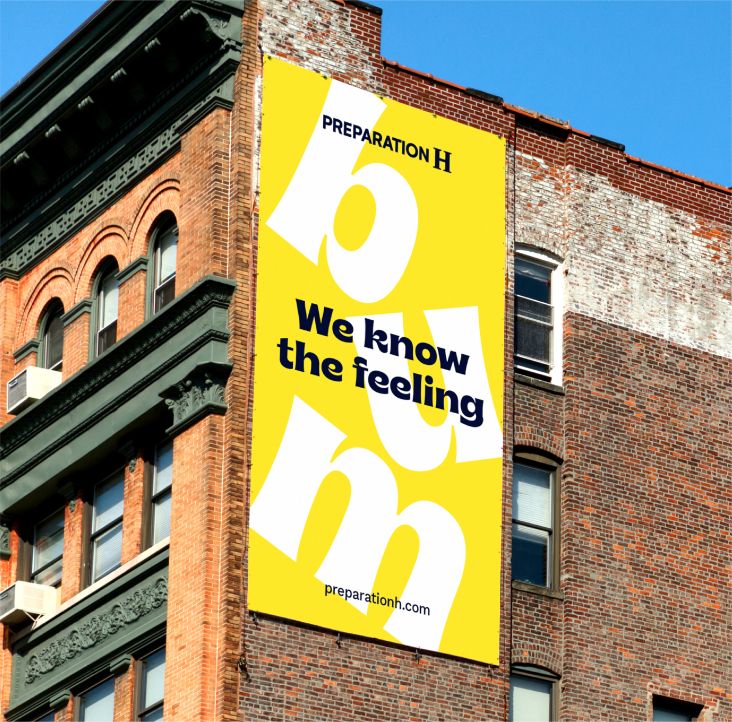Great insider tips on how to deal with difficult clients and make them happy
We've all had days when we just haven't seen eye-to-eye with a client. At which point you just want to scream at the top of your voice or run away in frustration. But while that might make you feel better for a second, it doesn't make the problem disappear. And ultimately, you know you're going to have to sit down calmly and find a way forward.

Image licensed via Adobe Stock
When you get to that point, it's worth reflecting on how often this happens and whether you need to approach your client relationships differently. Even if you aren't having constant issues with your clients, it's always worth thinking of ways to improve your approach because a happy client is more fun to work with and will probably end up sending more money and work your way.
To point you in the right direction, and to celebrate Client's Day on 19 March, we've asked for tips from the Creative Boom community on Twitter – and they came up trumps. Importantly, these tips are full of positivity and entirely lacking in snark. As Rob Birnie of DBM Motion Graphics says: "A pet hate of mine is seeing those 'stupid things that clients say'-type posts on social media. Total dick move and a turn off for current and potential clients if they see it."
We couldn't agree more! So read on for practical and actionable advice on keeping your clients happy and, ultimately, becoming happier in your work yourself.
1. Spell everything out
One of the biggest problems in client relationships – or indeed, any relationship – is when one party makes assumptions about the other and assumes they think in exactly the same way. In the words of American political scientist Eugene Lewis Fordsworthe, "assumption is the mother of all mistakes." So it's important to establish boundaries from the very start.
That means explaining to clients, in detail, how you operate. Outline the systems you have in place to ensure good communication and collaboration. And make it clear when you're available, too. For example, calling you at 9pm on a Friday to ask for a completed piece of work by Monday morning is never going to happen!
"One of the main things is to make sure both sides are clear about what has been agreed – in writing in my case," says Martin Dewar, a mentor at Project Scotland. "If you're both on the same page from the start, it will hopefully avoid any awkward conversations further down the line and mean the work is properly focused."
2. Keep communicating constantly
However, making things clear isn't just about the start of a relationship. The same approach needs to be followed throughout each project.
"Good communication is vital," emphasises freelance motion designer Thomas Davis. "Even if everything is going well with a project, small updates helps reassure the client and help put their minds at ease. Having a contract and statement of work in place also helps keep everyone on the same page. And having a clear, official sign-off process for the different stages of a project also helps catch any issues before they accumulate at the end."
"Be proactive," adds content writer Masooma. "Get back to their questions as fast as you can, and update them on project progress regularly. And when you submit work, add notes explaining your choices."
Above all, don't keep information close to your chest. "I have learned the hard way to give clients as much information as possible – more than you think is necessary – and make sure they've seen it and understand it," says freelance graphic designer and podcast host Liz Mosley.
Nor should you make the mistake of thinking everyone will remember a conversation in the same way: in practice, people often have vastly different ideas about what has or hasn't been agreed during a discussion. So as author-illustrator Gila von Meissner recommends, "Always put things that are communicated on phone, Zoom, or WhatsApp voice message in writing after."
SEO and marketing consultant Holly Landis agrees. "It's so important to keep good notes from calls," she says. "I've had several instances where I've gone back to a client and found a tiny snippet they've said that seemed minimal at the time, but which made them so happy when we addressed it later."
3. Be honest and upfront
Communication is not just about sharing raw information. It's also about being honest about how things are progressing. And while the temptation is to soft-soap the client and hand-wave away any problems, that won't do either of you any good in the long run.
Instead, "Be upfront about everything," advises interior and architecture photographer Jak Spedding. "If something is going to cost x and take y time to do, then say so. If you try and pull the wool over their eyes, you tarnish the whole creative industry."
By doing so, you won't just keep clients happy, but you'll find it much easier to avoid the dreaded 'scope creep', says illustrator and designer Eva Hunt. "Even if you've established payment terms, I sometimes find that additional requests throughout the project all get blurred," she explains. "So if you think you're working beyond the brief, say so the moment you realise, not after the work is done."
4. Manage disagreements diplomatically
Being open and honest means that, at some point, you may run into disagreements about the way the project is heading. That's not a disaster in itself: indeed, it shows that you're passionate about the project and committed to it succeeding. But it's how you handle the disagreement that's crucial.
"When you strongly disagree with the client about direction, it's your job to try and justify your reasoning and convince them as to why your way is best," says graphic designer Richard Vickers. "But ultimately, you should let them know the decision rests with them. It stops it from becoming a power struggle and reassures the client that you're only being a pain because you have their best interests at heart."
It's also vital to be selective about how often you push back. "Pick your battles," says graphic designer Jon Robinson. "You want the best for the client, but sometimes they'll be dead set on an idea they've got. You've got to know whether a hill is really worth dying on."
A big part of that is listening to the client: really listening. "No matter how absurd their ideas sound, pay attention," urges graphic designer and logo artist Rabia Iqbal. "Help them communicate freely and be open-minded. If necessary, educate them. Tell them why, how, and what. Make sure you're both on the same page; that's how I have retained some of my most valuable clients."
5. Demonstrate a long-term commitment
Want to keep a client happy over the long term? Remember that clients are people too and like the idea of people making a long-term commitment to them, rather than just grabbing the money on each project and running away.
One way you can demonstrate a long-term commitment is by thinking ahead and anticipating their needs. For instance, it's a good rule of thumb to email clients two months before any upcoming holidays. Then send a note a couple of weeks before your trip, saying: "Now's your last chance to get something done before my annual leave in June". Put your next holiday dates in your email footer, too; this allows clients to plan and shows them you're on the ball and prioritising their needs around your schedule.
Another key way to build long-term trust with a client is to focus on the little details of daily interaction. For example: "A quick 'thanks' or 'got it' after each email lets the client know you've got their message," notes motion/graphic designer Veronika McQuade. "You don't have to address the subject straight away; it simply calms nerves to confirm receipt."
That said, if the client goes quiet on you, that's their prerogative, so keep calm and carry on. "I've noticed creatives can treat client relationships like dating," observes creative coach Helen Jane Campbell. "Yet in reality, if they've not texted you back, well… it's probably not about you. We've got to stop showing up like needy lovers and build a secure attachment instead."
One way to do so is to hold annual client reviews. It is essentially a scheduled meeting where you discuss how things are going with your client to make sure everything is on track, and everyone is happy. What are you doing well? What can you do better? Can you review rates? In short, it's an opportunity for both sides to reset the relationship.
At the end of the day, keeping clients happy comes down to one thing: good communication. That's partly about regular and consistent with your communication, to make the client feel they're needed, respected and well informed. It's also about empathy: being able to see into the mind of your client and realise what type of information they need and how they'd prefer it delivered. Do all that, do good work, and you'll be in demand forever more.




 by Tüpokompanii](https://www.creativeboom.com/upload/articles/58/58684538770fb5b428dc1882f7a732f153500153_732.jpg)


 using <a href="https://www.ohnotype.co/fonts/obviously" target="_blank">Obviously</a> by Oh No Type Co., Art Director, Brand & Creative—Spotify](https://www.creativeboom.com/upload/articles/6e/6ed31eddc26fa563f213fc76d6993dab9231ffe4_732.jpg)
















